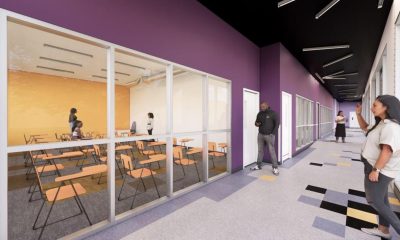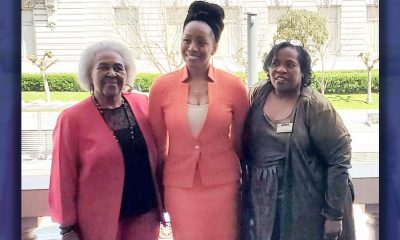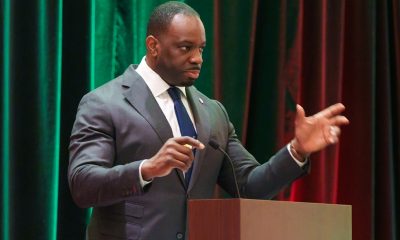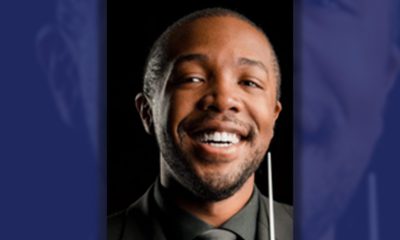Commentary
COMMENTARY: Let’s stand up for Black excellence at the U of M
MINNESOTA SPOKESMAN-RECORDER — Currently, the University of Minnesota is in the process of changing the names of four buildings named after presidents and vice presidents who have been shown to have racially discriminated against students and faculty during their tenures in the 1930s and early ’40s.
Sometimes we wait for other people who we think are smarter than us to stand up for the truth and fight on our behalf. We think that we don’t have the strong, intelligent voice the others have, so we go silent. But, sometimes they have other agendas.
Currently, the University of Minnesota is in the process of changing the names of four buildings named after presidents and vice presidents who have been shown to have racially discriminated against students and faculty during their tenures in the 1930s and early ’40s.
These buildings are Coffman Memorial Union, Coffey Hall, Middlebrook Hall and Nicholson Hall.
On October 4, 2018 U of M President Eric Kaler and Executive Vice President and Provost Karen Hanson charged members of a task force to “recommend actions regarding the specific buildings…and to utilize tools to gather community feedback on the buildings in question.”
The advisory recommendations of the task force will be considered by President Kaler and Provost Hanson, following which President Kaler will present recommendations to the Board of Regents on the four buildings in question. The president has made a presentation to the Regents on the renaming but has not identified any specific individuals whose names would be considered for this honor.
I visited the president’s office and asked the senior secretary if any African American names had been presented to the president; she told me none at that time.
I was stunned and shocked that the African American faculty had not at least recommended for that honor three iconic African American former students, faculty and administrators who gave their lives to the University of Minnesota campus and showed minority communities that they were welcome there.
These three administrators changed the way the University of Minnesota invited businesses, corporations, students and faculty to the University, a method of practice the University is still using today. I refer to Dr. Josie Robinson Johnson, Dr. Frank Wilderson, and Dr. McKinley Boston, Jr. Limited space here does not allow a full description of their extensive contributions to the U of M, but briefly:
Dr. Johnson served on the University’s Board of Regents between 1971 and 1973. She accepted the University’s offer of a senior fellowship in 1987 and directed its All-University Forum as diversity director from 1990 to 1992. That year, she became responsible for minority affairs and diversity at the college as the associate vice president for academic affairs. The U of M has established the annual Josie Robinson Johnson Human Rights and Social Justice Award in her honor.
Dr. Wilderson came to the U of M in 1962 as an assistant professor in the educational psychology department, then moved up to a full professorship. He was selected by students to help them negotiate and end their 1969 takeover of Morrill Hall.
He secured the Dr. Martin Luther King Scholarship around 1975 with funds coming from private donations, and he started the University of Minnesota Student Legal Services to help students with legal issues. The U of M president recruited him to run both the men’s and women’s athletic departments, and he was part of a six-person committee that went to Washington, D.C. to entice the Kennedys into bringing the Special Olympics to Minneapolis.
Dr. McKinley Boston, Jr. completed his undergraduate degree in education at the University of Minnesota in 1968, earned his master’s of science degree from Montclair State College in 1973, and completed his Ph.D. at New York University in 1988.
He was employed by the University as vice president for student development and athletics, serving as the chief student affairs officer for those services and programs that support and enhance student’s academic experiences and contribute to their healthy personal and social development. During his tenure at the U of M, Dr. Boston generated through sponsorship and fundraising over $75 million in support of student life and intercollegiate athletics.
He is published and active in a number of social justice strategies aimed at supporting noncustodial fathers and their desire to be partners in rearing their children.
This is just a sample of the many positive contributions these three remarkable human beings have made as members of this great institution. We have to stand up and SHOUT to this community that Dr. Johnson, Dr. Wilderson and Dr. Boston all deserve to have their names on campus buildings in recognition of their outstanding service.
[Editors’ update: On Friday, April 26, the U of M Board of Regents voted 14-1 against renaming any of the campus buildings.]
This article originally appeared in the Minnesota Spokesman-Recorder.
Activism
Oakland Post: Week of April 24 – 30, 2024
The printed Weekly Edition of the Oakland Post: Week of April 24 – 30, 2024

To enlarge your view of this issue, use the slider, magnifying glass icon or full page icon in the lower right corner of the browser window. ![]()
Activism
Oakland Post: Week of April 17 – 23, 2024
The printed Weekly Edition of the Oakland Post: Week of April 17 – 23, 2024

To enlarge your view of this issue, use the slider, magnifying glass icon or full page icon in the lower right corner of the browser window. ![]()
Commentary
Opinion: Surviving the Earthquake, an Eclipse and “Emil Amok.”
Last Friday, a 4.8 magnitude earthquake shook New York City, reported as the “biggest earthquake with an epicenter in the NYC area since 1884” when a 5.2 quake hit. A bit bigger. The last quake similar to Friday’s was a 4.9 in 1783.Alexander Hamilton felt it — 241 years ago. That’s why New Yorkers were freaking out on Friday. They were in the room where it happens.
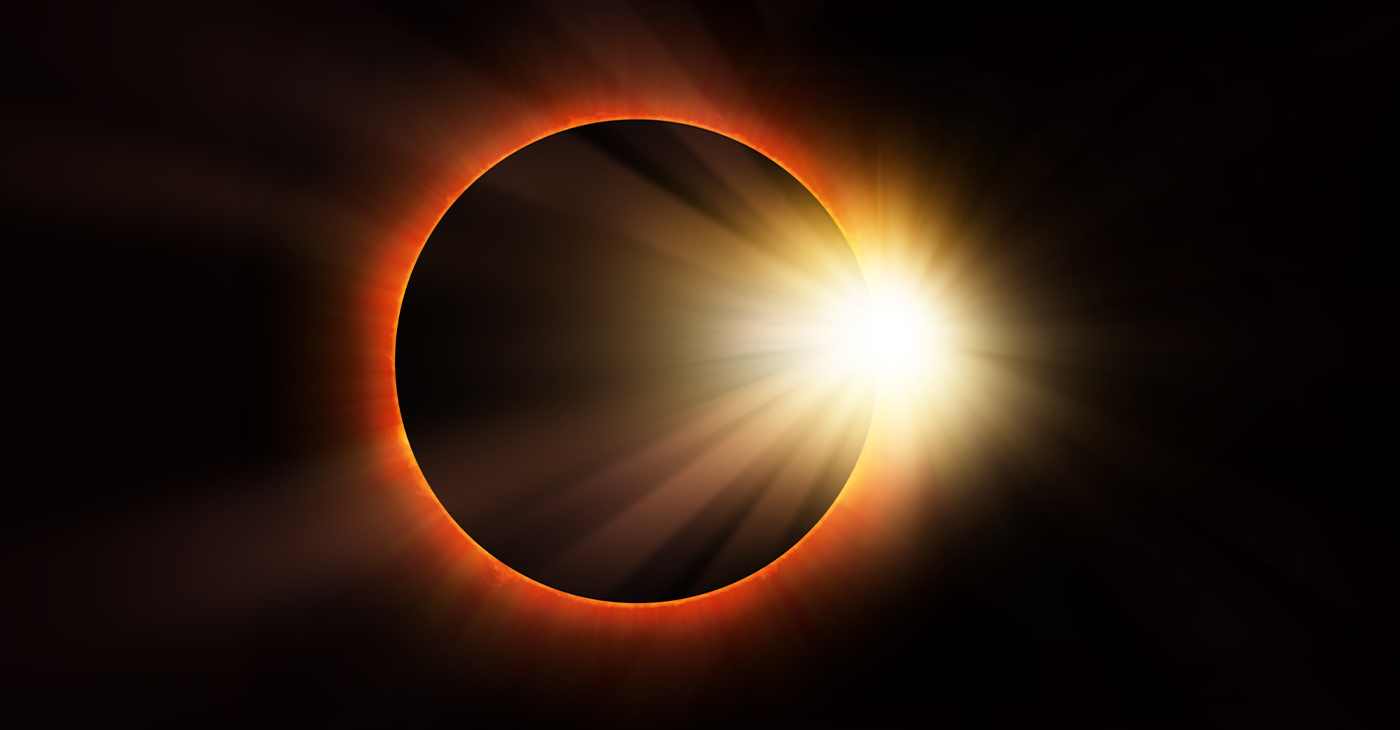
By Emil Guillermo
I’m a Northern Californian in New York City for the next few weeks, doing my one-man show, “Emil Amok, Lost NPR Host, Wiley Filipino, Vegan Transdad.”
I must like performing in the wake of Mother Nature.
Last Friday, a 4.8 magnitude earthquake shook New York City, reported as the “biggest earthquake with an epicenter in the NYC area since 1884” when a 5.2 quake hit. A bit bigger. The last quake similar to Friday’s was a 4.9 in 1783.
Alexander Hamilton felt it — 241 years ago.
That’s why New Yorkers were freaking out on Friday. They were in the room where it happens.
And it just doesn’t happen that often.
Beyonce singing country music happens more frequently.
When I felt New York shake last week, it reminded me of a time in a San Francisco TV newsroom when editors fretted about a lack of news an hour before showtime.
Then the office carpeting moved for a good ten seconds, and the news gods gave us our lead story.
On Friday when it happened in NYC, I noticed the lines in the carpeting in my room wiggling. But I thought it was from a raucous hotel worker vacuuming nearby.
I didn’t even think earthquake. In New York?
I just went about my business as if nothing had happened. After living near fault lines all my life, I was taking things for granted.
Considering the age of structures in New York, I should have been even more concerned about falling objects inside (shelves, stuff on walls) and outside buildings (signs, scaffolding), fire hazards from possible gas leaks, and then I should have looked for others on my floor and in the hotel lobby to confirm or aid or tell stories.
Of course, as a Californian who has lived through and covered quakes in the 4 to 6 magnitude range, I tried to calm down any traumatized New Yorker I encountered by taking full responsibility for bringing in the quake from the Bay Area.
I reassured them things would be all right, and then let them know that 4.8s are nothing.
And then I invited them to my consoling post-Earthquake performance of “Emil Amok, Lost NPR Host…”
It was the night of the eclipse.
ECLIPSING THE ECLIPSE
In New York City, the eclipse was about 90 percent visible. Good enough for me. Though a full solar eclipse is a celestial rarity, blockages of any sort aren’t generally celebrated. My one-man play is about growing up with the eclipsed history of American Filipinos and how I struggle to unblock all that.
For example, did you know the first Filipinos actually arrived to what is now California in 1587? That’s 33 years before the Pilgrims arrived in America on the other coast, but few know the Filipino history which has been totally eclipsed.
I was in Battery Park sitting on a bench and there was a sense of community as people all came to look up. A young woman sitting next to me had a filter for a cell phone camera. We began talking and she let me use it. That filter enabled me to take a picture of the main event with my iPhone.
For helping me see, I invited her and her boyfriend to come see my show.
Coincidentally, she was from Plymouth, Massachusetts, near the rock that says the year the Pilgrims landed in 1620.
In my show she learned the truth. The Pilgrims were second.
History unblocked. But it took a solar eclipse.
Next one in 2044? We have a lot more unblocking to do.
If you’re in New York come see my show, Sat. April 13th, 5:20 pm Eastern; Fri. April 19, 8:10 pm Eastern; and Sun. April 21st 5:20 pm Eastern.
You can also livestream the show. Get tickets at www.amok.com/tickets
About the Author
Emil Guillermo is a journalist and commentator. He does a mini-talk show on YouTube.com/@emilamok1. He wishes all his readers a Happy Easter!
-

 Activism4 weeks ago
Activism4 weeks agoOakland Post: Week of March 27 – April 2, 2024
-

 #NNPA BlackPress4 weeks ago
#NNPA BlackPress4 weeks agoBeloved Actor and Activist Louis Cameron Gossett Jr. Dies at 87
-

 Community2 weeks ago
Community2 weeks agoFinancial Assistance Bill for Descendants of Enslaved Persons to Help Them Purchase, Own, or Maintain a Home
-

 Activism3 weeks ago
Activism3 weeks agoOakland Post: Week of April 3 – 6, 2024
-

 Business2 weeks ago
Business2 weeks agoV.P. Kamala Harris: Americans With Criminal Records Will Soon Be Eligible for SBA Loans
-

 Community2 weeks ago
Community2 weeks agoAG Bonta Says Oakland School Leaders Should Comply with State Laws to Avoid ‘Disparate Harm’ When Closing or Merging Schools
-

 Activism2 weeks ago
Activism2 weeks agoOakland Post: Week of April 10 – 16, 2024
-

 Community1 week ago
Community1 week agoOakland WNBA Player to be Inducted Into Hall of Fame

